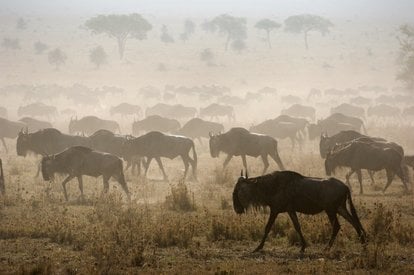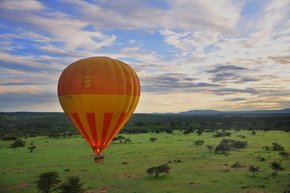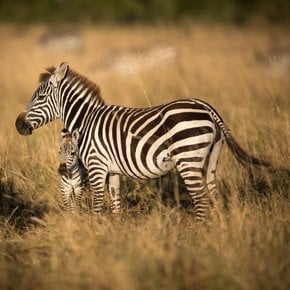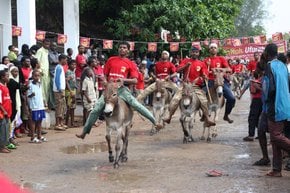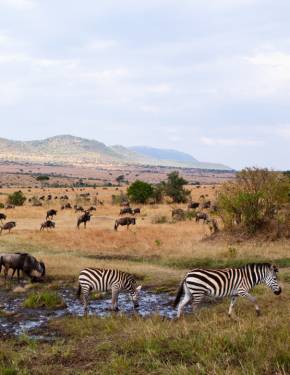Wildebeest Migration in Kenya 2026
Witness one of the greatest miracles of the world
Best time: August–October
The wildebeest, also known as gnu, are antelopes native to Eastern and Southern Africa. While their annual migration may seem like a unique and mysterious event, with millions of animals crossing rivers and plains to find new pastures, it’s actually a crucial part of their daily survival—driven by the need to find food. Despite this, the spectacle remains miraculous and breathtaking, as it occurs most vividly in only two places: Serengeti National Park in Tanzania and the Maasai Mara National Reserve in Kenya.
Migrating Season
The wildebeest migration journey typically begins in late July or August as the herds move from Serengeti National Park in Tanzania to the greener fields of Maasai Mara National Reserve in Kenya. In September, visitors can witness massive herds grazing before they prepare to migrate back to Tanzania. By October and November, the rains in Serengeti draw the wildebeests back, continuing the cycle.
Key Viewing Locations
Key viewing locations include Maasai Mara National Reserve, renowned for the migration, especially during the dramatic river crossings at the Mara River, which peak from July to September. Serengeti National Park, while in Tanzania, is part of the same migration route, where wildebeests frequently move between the two regions. The Ngong Hills offer vantage points to observe the herds as they head towards Maasai Mara. Lake Nakuru National Park provides opportunities for sightings of wildebeests as they search for grazing grounds. Be sure to check with national park authorities for specific dates to ensure you don’t miss this incredible spectacle.
Other Animas to Spot
A safari is the best way to witness the migration of over two million animals, primarily wildebeests, along with zebras, gazelles, and elands, in Kenya and Tanzania. This spectacular event not only showcases the largest populations of these animals but also attracts predators such as lions, cheetahs, and hyenas, leading to dramatic hunts. Tourists can experience this incredible natural phenomenon while also learning about local culture from guides, including insights into traditional food, folk wisdom, and the way of life of the communities in the region. The annual wildebeest migration is one of the largest land movements globally, making it a significant tourist attraction.
Wildebeest Info
The wildebeest, also known as the gnu, is a large antelope native to Africa. It has a muscular build, long legs, and a distinctive shaggy mane. Its body is dark gray with lighter underparts, and it features curved horns on both males and females. Wildebeest are known for their massive annual migration, where millions travel in search of fresh grazing lands, facing numerous predators along the way. They primarily graze on grasses and play a crucial role in maintaining the balance of Africa’s savanna ecosystems.
Challenges of the Wildebeest Migration
The wildebeest migration presents numerous challenges that lead to the death of many animals. One of the most dangerous hurdles is crossing rivers teeming with crocodiles, which prey on any animal attempting to cross. In addition, predators like lions, cheetahs, hyenas, and leopards target weak, tired, or injured migrants. These predators strategically position themselves to maximize their chances of a successful hunt, making the migration a perilous journey for many animals.

